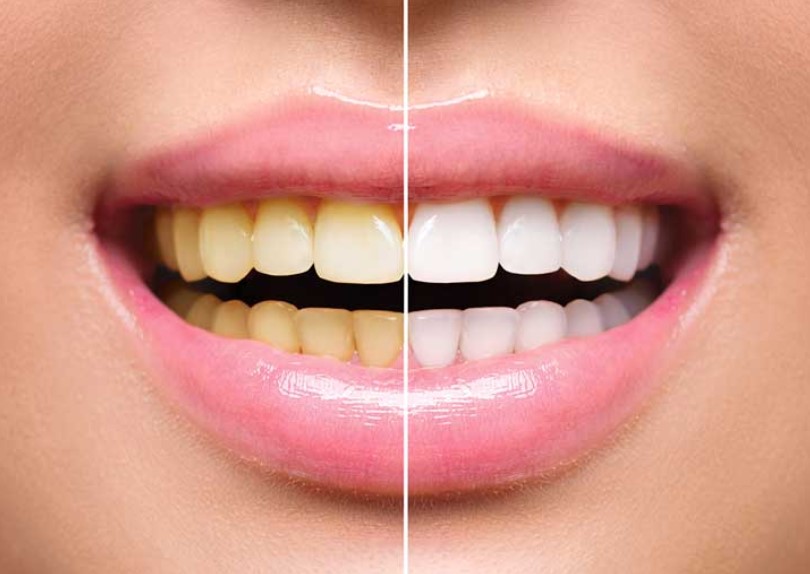Your smile might also be the first thing that someone notices about you, and if you favor brighter and whiter teeth, there are some things that you may prefer to know about teeth whitening. Teeth whitening is a beautiful dental procedure sometimes referred to as dental bleaching, but there is a difference in definition. Teeth whitening restores the teeth to their herbal color, and bleaching whitens teeth beyond the herbal color. There are many reasons that teeth might also become discolored, and there are professional methods as well as home methods that may help to whiten your teeth.

Reasons for Tooth Discoloration
Deciduous teeth, or major teeth, are generally whiter than adult enamel that follow. Teeth become darker when their mineral structure changes and enamel will become less porous. Bacterial pigments, various dark-colored ingredients and beverages, tobacco, acidic foods, and some antibiotic medications contribute to the staining of teeth, as properly as microscopic cracks in the enamel from age, and use.
Two types of teeth stains are extrinsic, which means the stains on the surface of the teeth, and intrinsic stains, which are stains within the enamel structure that are caused through trauma, aging, or exposure to tetracycline or excessive fluoride as a child. Microscopic cracks additionally fill with stains and debris, and these millions of cracks in the enamel result from everyday use in chewing.
Types of Teeth Whitening
In-Office Bleaching – Cosmetic dentists specialize in teeth whitening, and may use washes, gels, laser light, or an aggregate of procedures. Teeth will generally be examined and cleaned initially, and tooth coloration will be discussed, using a shade chart. A cheek retractor is inserted, a hardening resin is painted on the gums to protect them from bleaching, and a whitening gel is applied for 15 to 30 minutes. This gel is suctioned or rinsed off, and fresh gel is once more applied for 15-30 more minutes. Intense laser mild may also be used to spark off or enhance bleaching gels. The cost on a common is $650 per treatment.
Over-The-Counter Or Dentist Provided Bleach – This bleach is for home use and can be toothpaste, whitening strips, whitening trays, or teeth whitening pen, and usually contains baking soda, carbamide peroxide, or hydrogen peroxide. Most over-the-counter whitening toothpastes consist of minor abrasives, which scrub stains from the enamel. Many of these products do work, yet will no longer produce the results of professional bleaching, due to the fact the active agents, such as peroxide, do not continue to be on the teeth long adequate to whiten a great deal unless used often. These merchandises can cost anywhere from $20-$100 on average.
Natural Bleaching – Some fruits and veggies contain malic acid, which is an organic compound and might also help to whiten teeth. Baking soda may additionally be used in brushing, as a mild abrasive to scrub stains from the outer enamel.
Risks of Teeth Whitening
The primary hazard to your teeth from whitening is damage to the enamel. Using whitening merchandise excessively, or brushing too hard, and too often, may damage the enamel of the tooth, exposing it, which will lead to enamel sensitivity. Gum irritation may result from using hydrogen peroxide, also main to teeth sensitivity issues.
You should no longer have your teeth whitened if you are pregnant or nursing, due to the risk of eating peroxide. Another risk is called “technicolor teeth”, which means that teeth are colored otherwise due to porcelain veneer, bonding, or crowns not being whitened to match other teeth. The whitening substances used, do not affect any previous dental work, so your newly whitened teeth may also not match the in the past added dental materials.
Remember to have realistic expectations from any teeth whitening procedure. When teeth are whitened, they will return to their natural color, which is dictated by genetics, and your lifestyle. When enamel is bleached, bleach them only as white as any porcelain dental work you have had, so that your natural enamel and any dentistry work will match. Whitening results are not wholly seen until about two weeks after bleaching, so if desired results are no longer seen immediately, wait to make sure, before searching for another procedure.
